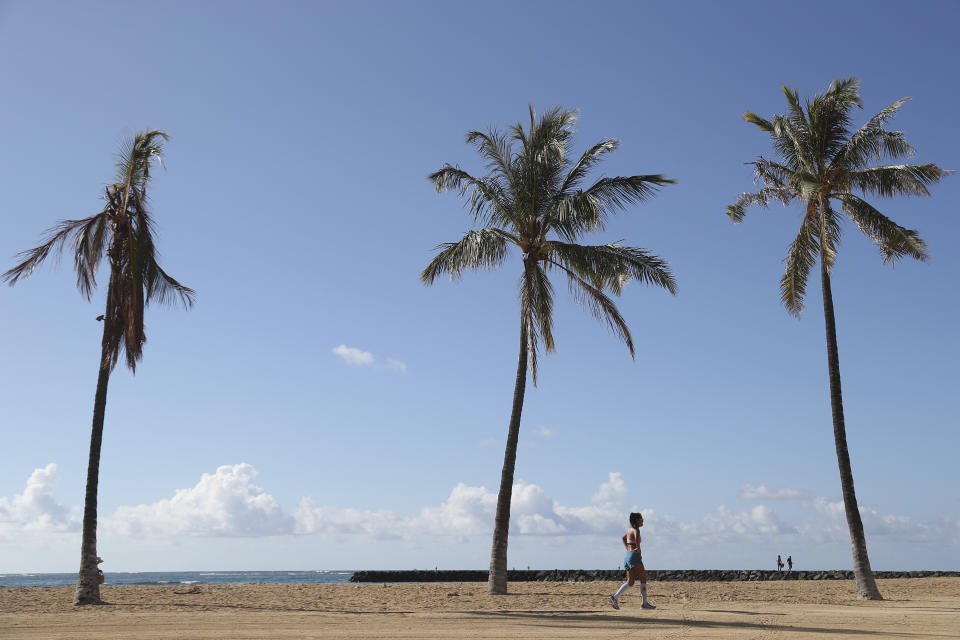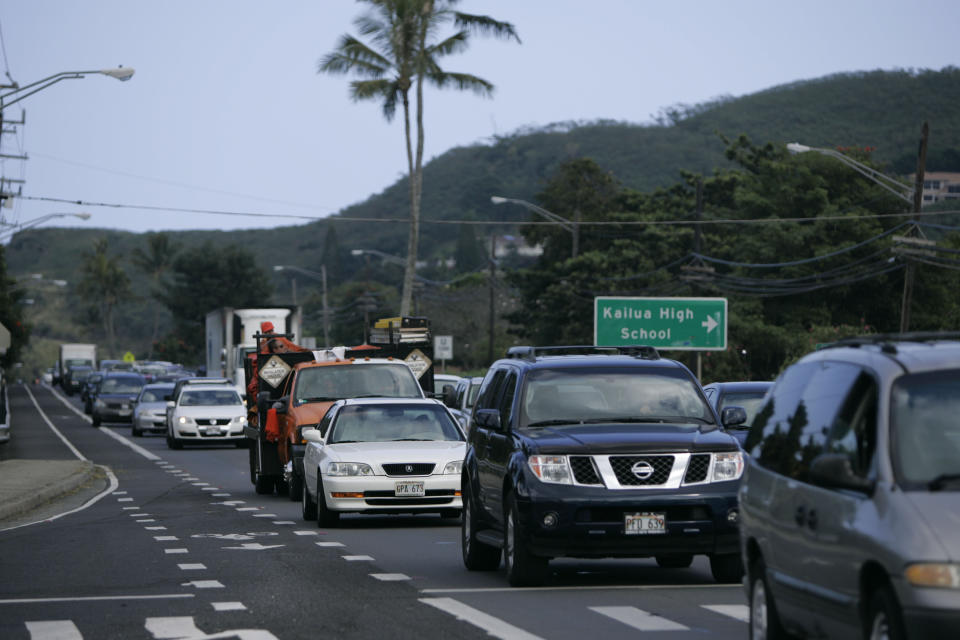Hawaii settles lawsuit from youths over climate change. Here's what to know about the historic deal
HONOLULU (AP) — About two years after 13 children and teens sued Hawaii over the threat posed by climate change, both sides reached a settlement that includes an ambitious requirement to decarbonize the state's transportation system over the next 21 years.
It's another example of a younger generation channeling their frustration with the government's response to the climate crisis into a legal battle.
Navahine v. Hawaii Department of Transportation is the world’s first youth-led constitutional climate case addressing climate pollution from the transportation sector, according to statements from both sides.
The lawsuit said one plaintiff, a 14-year-old Native Hawaiian, was from a family that farmed taro for more than 10 generations. However, extreme droughts and heavy rains caused by climate change have reduced crop yields and threatened her ability to continue the cultural practice.
The complaint said rising sea levels also threaten to put their lands underwater.
Another plaintiff lost her home twice, due to climate change-induced events, according to Our Children's Trust, a public interest law firm that is representing the plaintiffs: flooding from a hurricane in 2018 and last year's deadly wildfire that ravaged Lahaina, on the island of Maui.
Here are some things to know about the historic settlement:
What happened with the lawsuit this week?
Circuit Court Judge of the First Circuit John M. Tonaki signed a settlement agreement Thursday between the plaintiffs, who are also represented by another law firm, Earthjustice, and the state of Hawaii and its Department of Transportation.
The lawsuit argued that Hawaii was violating the state constitution by operating a transportation system that harms the climate and infringes upon the right to a clean and healthy environment. It accused the Department of Transportation of consistently prioritizing building highways over other types of transportation.
The burning of fossil fuels — oil, gas and coal — is the main contributor to global warming caused by human activity. Hawaii is the state that most depends on petroleum, according to Our Children’s Trust.
A key term of the settlement requires Hawaii to achieve zero greenhouse gas emissions across all transportation modes, including ground transportation and sea and air interisland transportation, “no later than 2045.”
The state must also come up with a greenhouse gas reduction plan within a year.
The transportation department must complete pedestrian, bicycle and transit networks in coordination with Hawaii counties within five years, while dedicating at least $40 million to expanding the public electric vehicle charging network by 2030.
The settlement terms may seem ambitious, but as an isolated island chain the middle of the Pacific, Hawaii is on the “front lines” of climate disasters, Our Children's Trust attorney Andrea Rodgers told the Associated Press on Friday.
“They really have no choice but to step up and address the climate crisis in order to protect their residents and young people who want to live here,” she said.
Also under the settlement, Hawaii will be accountable to a judge who will enforce the agreement if disputes arise.
The lawsuit, filed in June 2022, had been scheduled to go to trial next week. The state is not admitting any liability or wrongdoing by settling.
What is significant about the deal?
The parties said the settlement was also the first of its kind between a state government and youth plaintiffs to address constitutional issues arising from climate change.
Rodgers is also involved in similar legal battles in Montana and Oregon, however.
The Montana case prevailed at trial, when a judge ruled last year that state agencies were violating the constitutional right to a clean and healthy environment by allowing fossil fuel development.
Early this year, the state Supreme Court declined a government request to block the ruling pending appeal. Oral arguments before the high court are set for July 10.
In the Oregon case, a federal appeals court panel rejected a long-running lawsuit brought by young climate activists challenging the U.S. government’s role in climate change. The case is still at the 9th U.S. Circuit Court of Appeals.
Overseas, six young adults and children from Portugal are arguing before the European Court of Human Rights that governments across the continent are not doing enough to protect people from climate change.
What was Hawaii's position?
While Gov. Josh Green, Director of Transportation Ed Sniffen and plaintiffs' attorneys all celebrated the settlement, it was a hard-fought battle.
“The defendants aggressively defended the case,” Rodgers said.
The state spent nearly $3 million on an out-of-state law firm and other costs, including expert witness fees. The attorney general's office said it remained the lead on the case despite help from the outside firm.
The state initially moved to dismiss the lawsuit, arguing that the court “cannot coopt legislative and executive power by issuing an injunction ordering HDOT to create new regulatory programs.”
The state also had to agree that depositions of plaintiffs would be conducted with the sensitivity appropriate for their ages, Rodgers said.
“There was resistance,” Rodgers said of reaching the settlement. “But at the end of the day, Gov. Green and ... Sniffen displayed incredible leadership and made the decision to work with the youth and not against them.”
What happens next?
Implementation over the next 21 years will require both commitment from Hawaii's leaders and involvement by young people, Rodgers said.
There will also have to be a cultural shift in Hawaii, which is car-dependent and has bad traffic.
“I think once people start seeing the investments that are needed to be done into the bike, pedestrian and transit assets, people are really going to start seeing that this is a system that works better for Hawaii and for the community,” Rodgers said.
“Having youth voices a part of this process will be essential,” she added.
___
Read more of AP’s climate coverage at http://www.apnews.com/climate-and-environment



